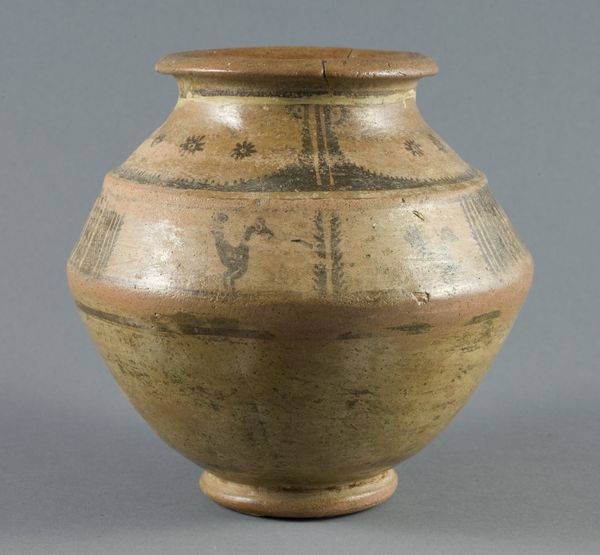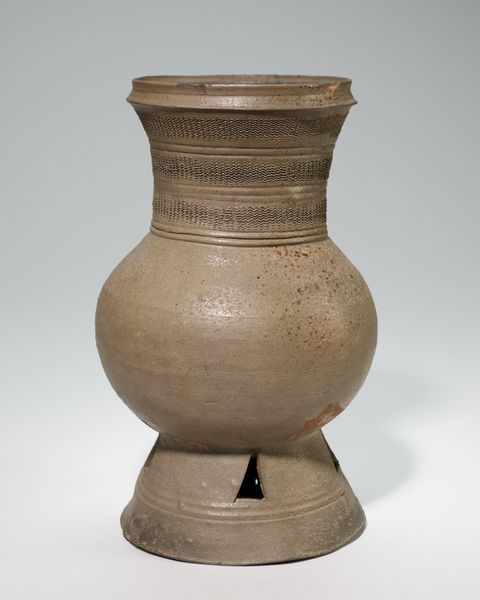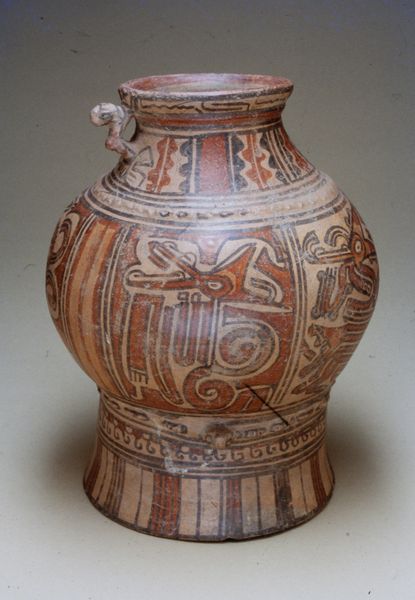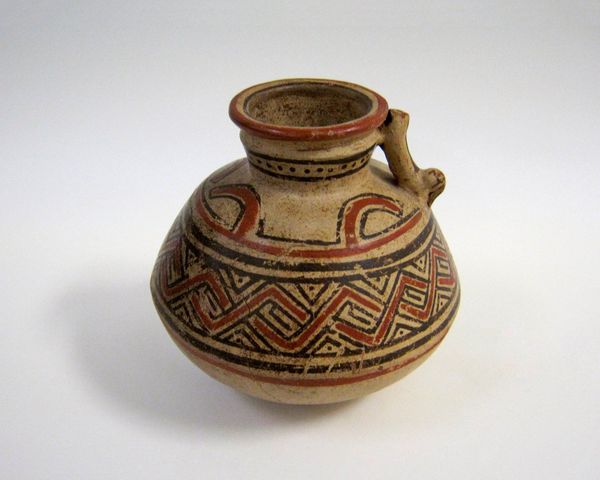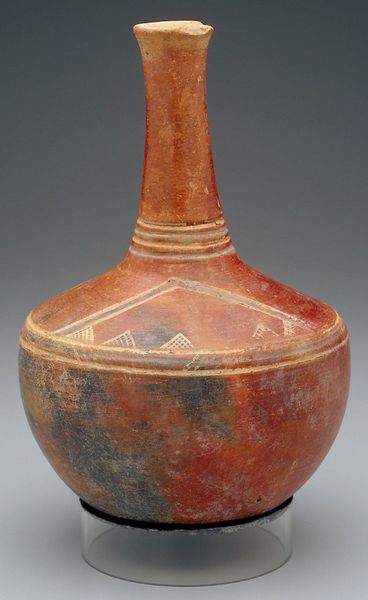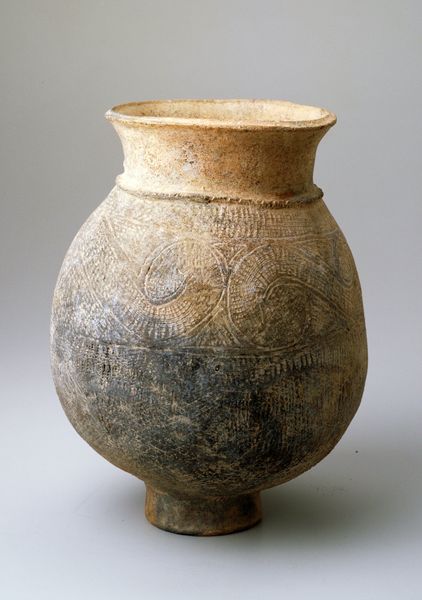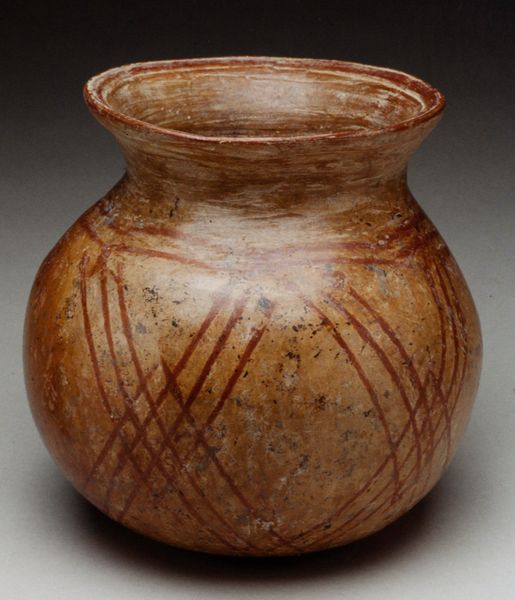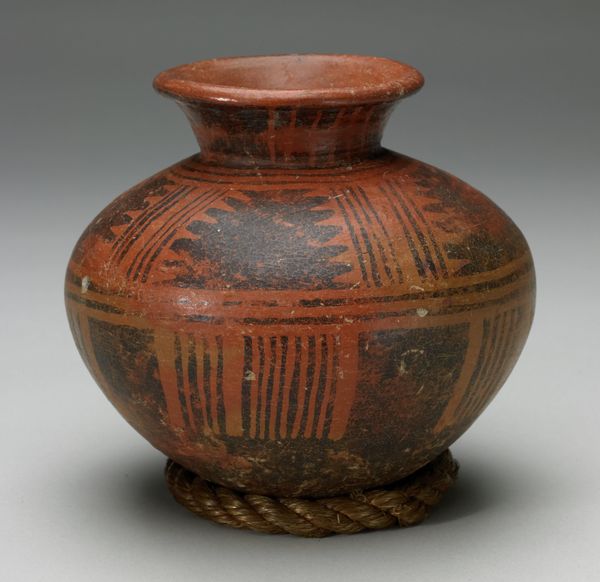
ceramic, earthenware
#
pottery
#
asian-art
#
ceramic
#
earthenware
#
geometric
#
ceramic
#
abstraction
#
line
#
earthenware
#
prehistoric
Dimensions: 13 3/4 x 16 1/2 in. (34.93 x 41.91 cm)
Copyright: Public Domain
Editor: Here we have a ceramic "Storage Jar" made around 2300 BCE, by the Majiayao culture. It's amazing to see something so functional, yet so thoughtfully decorated with these geometric patterns! What can you tell us about the context surrounding its creation? Curator: Let’s focus on the process, starting with the clay itself. This earthenware tells a story about the earth from which it came, the hands that shaped it, and the fire that hardened it. Consider the labor involved, the time investment, and the specific tools and techniques used. Editor: That's interesting, I never thought about the actual labour and time investment. But wouldn't decoration also play an important role for them? Curator: Certainly, but even the decoration reflects material constraints. The pigments used – probably derived from readily available minerals – dictated the color palette. The geometric patterns weren't just aesthetic choices; they might have been the most efficient way to decorate the curved surface with the tools they had. Think about the social implications – was this pottery produced by specialized artisans or made within individual households? Editor: So, even the artistry comes down to available technology and resources. Curator: Exactly! Furthermore, considering the function as a "storage jar" encourages us to ask what exactly was stored, how access to these materials impacted diet or trade, and how the vessel might connect to community survival. How does its materiality differ from today's storage options and impact patterns of use? Editor: I suppose understanding that makes me appreciate even more what such an early work communicates about available technologies. Curator: Absolutely. And by considering production methods, use, and cultural role, we can begin to challenge boundaries between art and craft, looking at labour, material reality, and consumption patterns across different periods. What do you think the future holds? Editor: Thank you. Looking through the lens of materiality adds depth and a critical new perspective on what ancient artisans had to work with!
Comments
No comments
Be the first to comment and join the conversation on the ultimate creative platform.
